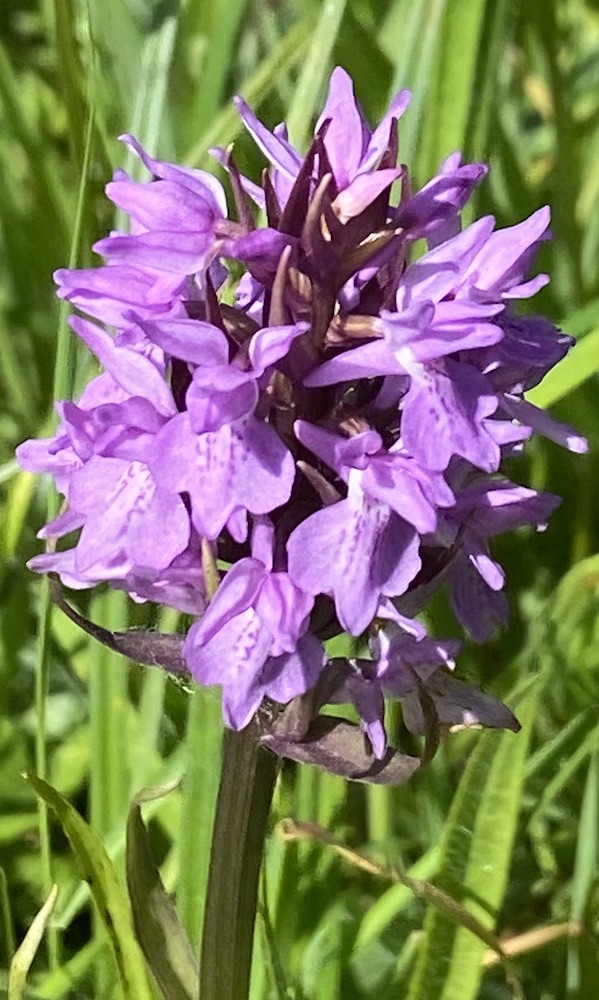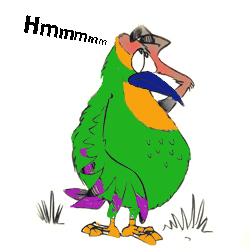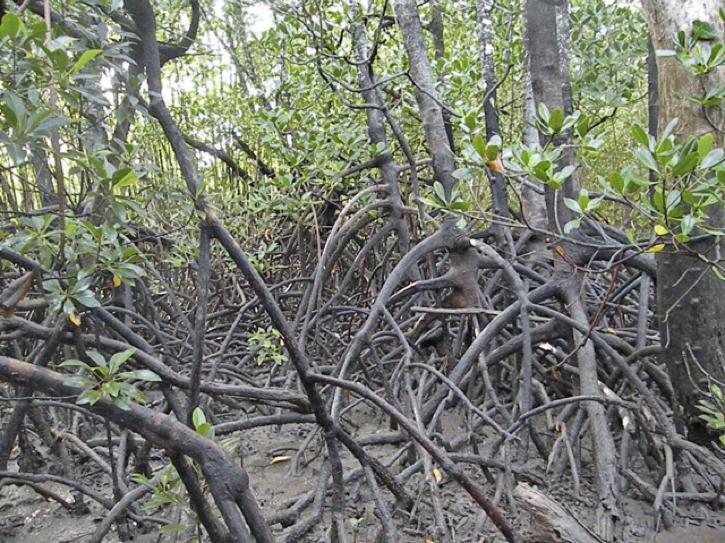There are many countries in the world where you can view hummingbirds, but all are in the Americas where every country has between one and one hundred and thirty-two species. Below the countries are listed in order of the most species to the least.
Colombia (168): Colombia has more bird species than any other country in the world. Moreover, with 168 hummingbird species recorded, it has more hummers than anywhere else on earth. These include a dozen endemics; Gorgeted Puffleg Eriocnemis isabellae, Colorful Puffleg Eriocnemis mirabilis, Black Inca Coeligena prunellei, White-tailed Starfrontlet Coeligena phalerata, Dusky Starfrontlet Coeligena orina, Santa Marta Woodstar Chaetocercus astreans, Chiribiquete Emerald Chlorostilbon olivaresi, Santa Marta Blossomcrown Anthocephala floriceps, Santa Marta Sabrewing Campylopterus phainopeplus, Chestnut-bellied Hummingbird Amazilia castaneiventris , Indigo-capped Hummingbird Amazilia cyanifrons, Sapphire-bellied Hummingbird Lepidopyga lilliae.
Ecuador (132): With 132 species of hummingbirds, Ecuador is one of the greatest destination for bird watchers wanting to see hummingbirds. With many lodges in prime hummingbird territory sporting hummingbird feeders, many can be seen with ease. It has three endemics; Black-breasted Puffleg Eriocnemis nigrivestis, Violet-throated Metaltail Metallura baroni and Esmeraldas Woodstar Acestrura berlepschi.
Peru (124): Peru has 124 species of hummingbirds, many of which can be seen in the cloud forests and high Andes. Fourteen are endemic; Koepcke’s Hermit Phaethornis koepckeae, Peruvian Piedtail Phlogophilus harterti, Bronze-tailed Comet Polyonymus caroli, Gray-bellied Comet Taphrolesbia griseiventris, Black-breasted Hillstar Oreotrochilus melanogaster, Bearded Mountaineer Oreonympha nobilis, Coppery Metaltail Metallura theresiae, Fire-throated Metaltail Metallura eupogon, Black Metaltail Metallura phoebe, Marvelous Spatuletail Loddigesia mirabilis, White-tufted Sunbeam Aglaeactis castelnaudii, Purple-backed Sunbeam Aglaeactis aliciae, Spot-throated Hummingbird Leucippus taczanowskii, Green-and-white Hummingbird Amazilia viridicauda
Venezuela (101): Venezuela is known for its rich birdlife, including a diverse array of hummingbird species. According to the International Union for Conservation of Nature (IUCN), there are 101 species of hummingbirds found in Venezuela. Five are endemic; Tepui Goldenthroat Polytmus milleri, Venezuelan Sylph Aglaiocercus berlepschi, White-bearded Helmetcrest Oxypogon lindenii, Scissor-tailed Hummingbird, Hylonympha macrocerca and Green-tailed Emerald Chlorostilbon alice. However, it’s worth noting that the exact number of hummingbird species in Venezuela may vary slightly depending on the source consulted.
Brazil (81): Brazil is lucky, having 81 species of hummingbirds, many of which can be seen in the Amazon rainforest. Thirteen are endemic; Saw-billed Hermit Ramphodon naevius, Hook-billed Hermit Glaucis dohrnii, Broad-tipped Hermit Anopetia gounellei, Dusky-throated Hermit Phaethornis squalidus, Minute Hermit Phaethornis idaliae, Sombre Hummingbird Aphantochroa cirrochloris, Dot-eared Coquette Lophornis gouldii, Frilled Coquette Lophornis magnificus,Long-tailed Woodnymph Thalurania watertonii, Brazilian Ruby Clytolaema rubricauda, Hyacinth Visorbearer Augastes scutatus, Hooded Visorbearer Augastes lumachella and Stripe-breasted Starthroat Heliomaster squamosus.
Bolivia (81): Bolivia is a country with a rich diversity of hummingbird species. According to the latest information available, there are 81 species of hummingbirds recorded in Bolivia, including two endemics; Coppery thorntail, Discosura letitiae and Blue-headed Sunbeam Aglaeactis pamela. However, as one of the less studied countries it is possible that new species may be discovered or identified in the future as the study of hummingbirds in the region picks up.
Panama (59): Panama has 59 species of hummingbirds, of which four are endemic; Veraguan Mango Anthracothorax veraguensis, Violet-capped Hummingbird Goldmania violiceps, Glow-throated Hummingbird Selasphorus ardens and White-throated Mountain Gem Lampornis castaneoventris. It is also home to some of the most colourful and diverse species in Central America. Having great infrastructure and a number of well-placed eco-lodges it ius a great place to see a great variety of hummers.
Mexico (58): Mexico has 58 species of hummingbirds, with some of the most spectacular species found in the cloud forests of the Sierra Madre. There are tweleve endemics: Short-crested Coquette Lophornis brachylopha, Mexican Sheartail, Doricha eliza, Beautiful Hummingbird Calothorax pulcher, Bumblebee Hummingbird Atthis heloisa, Golden-crowned Emerald Chlorstilbon auriceps, Cozumel Emerald Chlorstilbon forficatus, Dusky Hummingbird Cynanthus sordidus, Long-tailed Sabrewing Campylopterus excellens, Blue-capped Hummingbird Eupherusa cyanophrys, White-tailed Hummingbird Eupherusa poliocerca, Mexican Woodnymph Thalurania ridgwayi and Xantus’s Hummingbird Hylocharis xantusii.
Costa Rica (53): This Central American country is home to 53 species of hummingbirds, making it one of the best places in the world to view them, especially as it has a great infrastructure and lots of eco-lodges with feeders. Only two hummingbirds are truly endemic, Coppery Headed Emerald Microchera cupreiceps and the Mangrove Hummingbird Amazilia boucardi although several others are only found here and in neighbouring Panama.
Honduras (44): Honduras is home to 42 species of hummingbirds although two other ‘accidentals’ have been recorded. They include one critically endangered endemic the Honduran Emerald Polyerata luciae.
Guatemala (39): is home to over 39 species of hummingbirds, none are endemic. Some of the most common species found in there include the Rufous-tailed Hummingbird Amazila tzacatl, Violet Sabrewing Campytopterus hemileucurus and the Sparkling-tailed Woodstar Tilmatura dupondtii.
Guyana (39): There are thirty-nine species of hummingbirds that have been recorded in Guyana, none of which are endemic. Some of these species include the Long-tailed Hermit Phaethornis superciliosus, Black-throated Mango Anthracothorax nigricollis, Green-tailed Goldenthroat Polytmus theresiae and Rufous-breasted Hermit Glaucis hirsutus.
Nicaragua (37): has recorded 37 species of hummingbirds, making it a great place for birdwatching enthusiasts. Some of the most common species found in Nicaragua include the Violet-headeded Hummingbird Klais guimeti, Cinnamon Hummingbird Amazilia rutile, White-necked Jacobin Florisuga mellivora and Green-breasted Mango Anthracothorax prevostii.
Suriname (35): Although it is one of the smallest countries in South America, there are thirty-five species of hummingbirds that have been recorded in Suriname. These species include the Crimson Topaz Topaza pella, Long-billed Starthroat Heliomaster longirostris and Blue-tailed Emerald Chlorostilbon mellisugus among others.
French Guiana (32): According to the International Union for Conservation of Nature (IUCN), thirty-two species of hummingbirds have beeen found in French Guiana. These include the Blue-chinned Sapphire Chlorestes notata and Grey-breasted Sabrewing Campylopterus largipennis among others. However, the number of species may vary depending on the source consulted, as new species may be discovered or taxonomic changes may be made.
Argentina (29): Argentina has 29 species of hummingbirds, not counting hybrids and vagrants, including Swallow-tailed hummingbird, Eupetomena macroura, Sparkling violetear, Colibri coruscans and Purple-crowned plovercrest, Stephanoxis loddigesii.
Belize (21): There are 21 hummingbird species that can be found in Belize. These include: Canivet’s Emerald Cynanthus canivetii and White-bellied Emerald Chlorestes candida.
Paraguay (20): According to the International Union for Conservation of Nature (IUCN), there have been 20 species of hummingbirds known to have occured in Paraguay. These species include the Glittering-bellied Emerald Chlorostilbon lucidus, Fork-tailed Woodnymph Thalurania furcate and Gilded Hummingbird Hylocharis chrysura, none are endemic.
Trinidad and Tobago (18): These Caribbean islands are home to 18 species of hummingbirds, including the Tufted Coquette Lophornis ornatus and the Ruby-topaz Hummingbird Chrysolampis mosquitus, making them a great destination for those looking for a more tropical experience.
USA (15): There are fifteen species of hummingbirds that have bred in the United States, although the there are others which have been recorded, making a total of 27. The most commonly seen species in the United States is the Ruby-throated Hummingbird Archilochus colubris, which breeds in the eastern part of the country, although it might turn up anywhere, and migrates south for the winter. Other species that are found mainlky in the southern states from California to Florida include Anna’s Hummingbird Calypte anna, Black-chinned Hummingbird Archilochus alexandri, Calliope Hummingbird Selasphorus calliope and Allen’s Hummingbird Selasphorus sasin. The number of species seen in the United States increases during migration periods, when some species from Central and South America may pass through or overshoot.
Uruguay (8): Only eight hummingbird species have ever been recorded in Uruguay, and two of these were vagrants. Hummingbirds are mostly found in Central and South America, with the greatest diversity occurring in the tropical regions of the Andes Mountains. Uruguay’s birdlife is more characteristic of the temperate grasslands and Atlantic forests, and there are over 450 bird species recorded in the country, including many colourful and unique species.
Chile (6): There are currently six known species of hummingbirds that can be found in Chile. These species are the Green-backed Firecrown, Oasis Hummingbird, Chilean Woodstar, Andean Hillstar, White-sided Hillstar, and Giant Hummingbird.
Puerto Rico (5): Puerto Rico has five hummingbird species, including two endemics Green Mango Anthracothorax viridis and Puerto Rican Emerald Chlorostilbon maugaeus.
Jamaica (4): Jamaica is home to just four species of hummingbirds, but all are endemic the Jamaican Mango Anthracothorax mango, Vervain hummingbird Mellisuga minima, the Black-billed Streamertail Trochilus scitulus, and the Red-billed Streamertail Trochilus polytmus known as the Doctor Bird.
Cuba (2): Cuba has just two species of hummingbirds but both are endemic: the Bee Hummingbird Mellisuga helenae, which is the world’s smallest bird and the Cuban Emerald Chlorostilbon ricordii.
Hispaniola (Dominican Republic & Haiti) (2): There are two hummingbird species found on the island of Hispaniola, which is shared by the Dominican Republic and Haiti. These two species are the Vervain Hummingbird Mellisuga minima and the Hispaniolan Emerald Chlorostilbon swainsonii.
Canada (1): Canada some species of hummingbirds occasionally visiting during their migration or as a rare vagrant. Only the Ruby-throated Hummingbird, which is known to breed in eastern North America and migrate south for the winter sometimes nests there.
Lesser Antilles: Several of the islands in the Lesser Antilles also have hummingbird species, such as the Antillean Crested Hummingbird Orthorhyncus cristatus, Purple-throated Carib Eulampis jugularis and the Green-throated Carib Eulampis holosericeus, which are all found in most islands.











